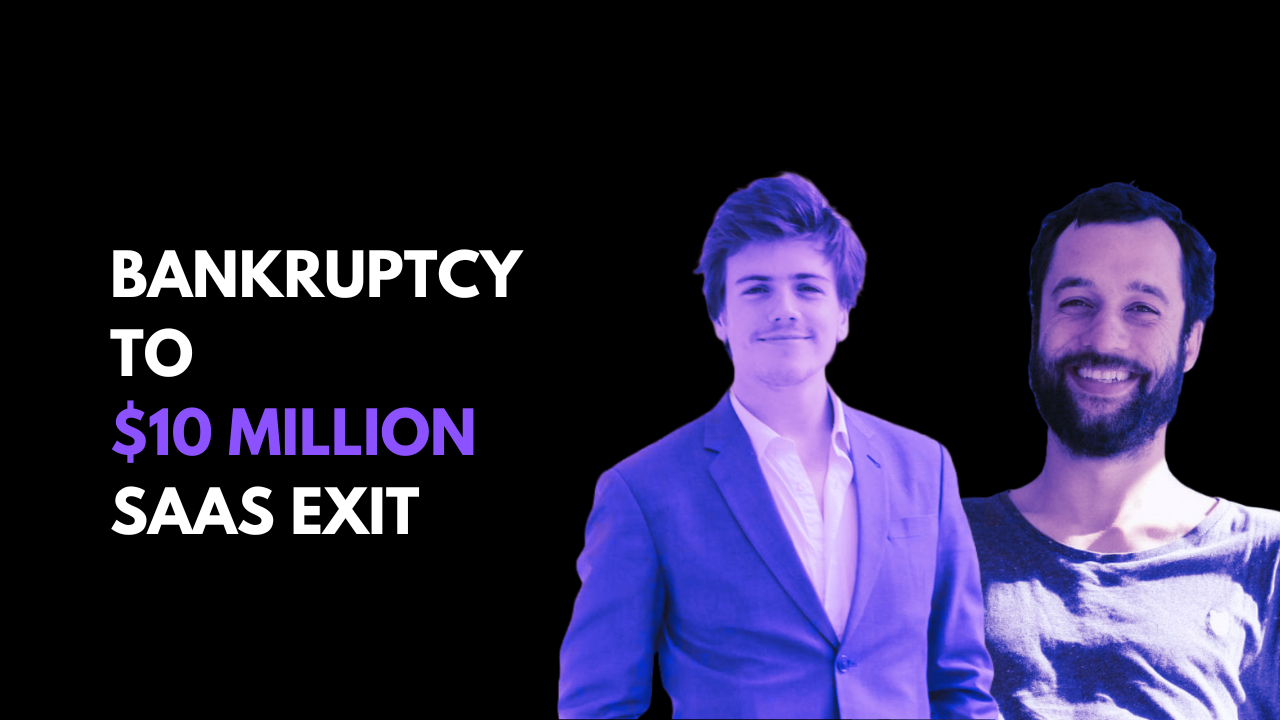What would you do if your business failed?
Not once. But twice.
For Tibo Louis-Lucas, the answer was simple: keep going.
In 2020, he hit rock bottom. His second startup had collapsed, leaving him bankrupt and out of options. Three years later, he sold two companies, Tweet Hunter and Taplio, for over $10 million.
How? Let’s break it down.
The Beginning: Two Big Failures
Tibo wasn’t always a success story. He started out like many entrepreneurs with big dreams.
- Startup #1: Pistache
Tibo raised €200k for an app that made chores fun for kids. It sounded great. But the business model? It didn’t work. After 500,000 downloads, they ran out of cash and shut down. - Startup #2: Magicats
His next idea was a coding app for kids. This time, he raised €500k and even caught Ubisoft’s attention. But when a licensing deal fell through, the company went bankrupt. Worse, Tibo was left with €250k in debt.
Two failures. Two painful lessons.
The takeaway? Throwing money at a problem doesn’t solve it.

The Comeback: A Lean, Fast Approach
After Magicats, Tibo did something different. He kept things simple. No big budgets. No big teams. Just him and his co-founder, Tom Jacquesson.
They had one goal: test ideas fast.
Here’s what they did:
- Built 11 products in 4 months. Most failed, but one didn’t: Tweet Hunter, a tool that helps you grow on Twitter/X by making it easy to create content, suggesting tweet ideas when you’re stuck and scheduling your posts, saving you time.
- Stayed lean. Tibo lived off unemployment benefits while they figured things out.
- Focused on small wins. Tweet Hunter hit $1,000 in monthly recurring revenue (MRR) within two months.
It wasn’t glamorous. But it worked.
We will breakdown lessons that we can learn form his journey.
Lesson 1: Don’t Raise Money Too Early
In his first two startups, Tibo raised money fast. Why not? It felt like the right thing to do.
But looking back, he realized it was a mistake.
Here’s why:
- Big teams meant big salaries. Burnout wasn’t just a personal risk—it was financial.
- Investors wanted results. Quickly. That pressure made it hard to experiment.
- Early fundraising gave them no room to fail.
This time, Tibo didn’t raise a dime. Instead, he stayed lean and scrappy, testing ideas without external pressure.
Think about it: You don’t need a big budget to get started. You just need to start.
Lesson 2: Launch. Then Launch Again.
Tibo and Tom didn’t wait for the “perfect” product. Instead, they launched new ideas fast—and kept launching even after they found a winner.
Here’s what that looked like:
- Find the Winner: In four months, they launched 11 products. Ten flopped. One—Tweet Hunter—stood out.
- Relaunch the Same Product: After Tweet Hunter gained traction, they didn’t stop. Every feature update became an event. They created side tools like the AI Tweet Generator and Twitter Growth Challenge to keep users engaged.
Think of it like releasing a new single every month. Fresh releases keep people coming back for more.
Lesson 3: Stay Niche. Go Deep.
When Tweet Hunter launched, it did one thing—and one thing well.
It helped creators grow their brands on Twitter.
Other tools aimed to do everything: manage multiple platforms, schedule all kinds of content, etc. Tibo did the opposite. He focused on one niche.
And when users asked for LinkedIn features? He didn’t cram them into Tweet Hunter. Instead, he built a separate product: Taplio.
The result? Two tools. Two loyal audiences.
The big idea? Specialize. Trying to be everything to everyone just waters down your product.
Lesson 4: Partner with Influencers
Tibo took a bold approach to marketing: he gave away equity to influencers.
Here’s how it happened:
- He cold-DM’d influencers like JK Molina, pitching Tweet Hunter.
- JK loved it—and asked for equity instead of affiliate commissions.
- Tibo structured a tiered equity deal:
- 10% equity at launch
- 15% equity at $15K monthly revenue
- 25% equity at $40K monthly revenue
That partnership paid off big time. JK promoted Tweet Hunter to his 30,000+ followers, driving MRR from $3,000 to $20,000 in just three months.
Tibo then took it further. He proactively offered 1% equity to other influencers. The result? A network of ambassadors promoting Tweet Hunter to thousands.
Why it worked: People work harder when they have skin in the game.
Lesson 5: Sell to Someone Who Gets It
When it came time to sell, Tibo faced a problem. Most buyers didn’t understand Tweet Hunter’s potential.
Except for one: Guillaume Moubeche, founder of Lemlist.
Guillaume was already a Tweet Hunter customer. He loved the product and saw its value.
To sweeten the deal, Tibo leveraged additional growth strategies:
- A micro-acquisition of Twemex, a Twitter sidebar Chrome extension
- Strong SEO content that drove organic traffic
- Continuous product innovations
Tibo and Tom sold the business to Guillaume for an 8-figure deal with a two-year earn-out. This gave them time to grow the company under new ownership—and profit even more from its success.
The takeaway? The right buyer doesn’t just buy your past success. They buy into your future potential.
What Can You Learn from Tibo?
Tibo’s journey isn’t just inspiring. It’s practical. Here’s what you can take away:
- Stay lean. Don’t hire too fast or raise money unless you have to.
- Test often. Launch new ideas quickly and learn from them.
- Focus on a niche. Do one thing really well instead of trying to do everything.
- Partner wisely. Build relationships with people who genuinely believe in your product.
- Sell strategically. Find buyers who understand your product’s true value.
Final Thoughts
Tibo Louis-Lucas went from bankrupt to multimillionaire in just three years. His secret? Resilience and a willingness to try, fail, and try again.
As Tom Jacquesson, his co-founder, put it: “We’re not big fans of traditional marketing. We’re big fans of product, shipping, building.”
Your takeaway? Keep going. Even if things seem impossible, your next big win might be just around the corner.
Now the question is: what’s your next move?


Leave a Reply